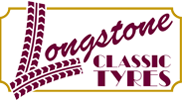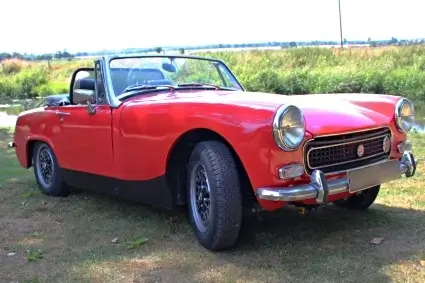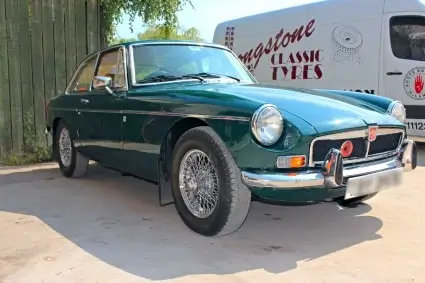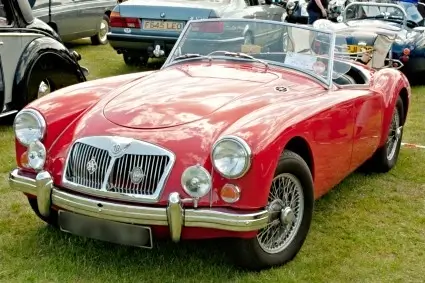MG Tyres
Classic MG Tyres
On the following pages, Longstone Classic Tyres give classic tyre fitment recommendations for MG cars.
If your MG is not listed, don't panic! Please give us a call on:
01302 711 123
or
Email: sales@longstonetyres.co.uk
MG Tyres
The availability of classic MG tyres for their little sports cars is very good. The MGB originally fitted 165 HR 14 PIRELLI CINTURATO CA67 tyres which are being produced again to give the enthusiastic driver the opportunity to drive the MGB at its best. A proper period tyre makes a big improvement to a little rear-wheel-drive sports car. So it is great news that there is also a proper period 145HR13 PIRELLI CINTURATO CA67 for the Midget again. And the 175 HR 14 Michelin XAS is also available for the V8 MGB. Worth noting that even when they fitted the V8 engine to these little sports cars, over 20 years after low profile wide tyres had been developed MG were aware of how much better they handled on a thinner tyre and did not over tyre the car like so many people misguidedly do today.
Vintage MG Tyres
The very First Morris Garages Vintage MG of the 1920s were generally fitted with 19” wheels, for which we would suggest the 4.00/4.50 x 19 Longstone. Most MG Sports cars of the pre-war sports cars continued to fit 19” wheels for which that vintage 3 stud tread pattern became obsolete in 1936 when the majority of roads were becoming tarmacked and the Dunlop B5 tread pattern became more appropriate on the vintage T-type MG from the TA of 1936 to the MG TC of 1945 to 1950. The classic post-war MG TD 1950 to 1953 fitted 15” wheels as did the MG TF of 1953 to 1955, for which we would recommend 165 HR 15 PIRELLI CINTURATO CA67.
MG History
Since its inception in the early 1920s, MG automobiles have been managed by a number of different corporations and organisations, and today this well-known sporting brand is flourishing under the leadership of the Chinese-based automotive behemoth SIAC Motor Corporation.
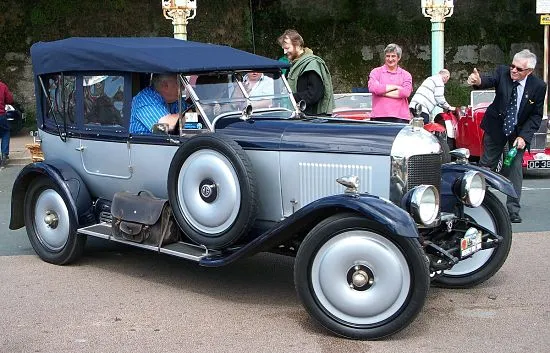
In Longwall Street, Birmingham, William Morris began manufacturing bicycles. By 1911, Morris had shifted his focus to motor vehicles, selling and repairing a variety of models from the refurbished facilities, now known as Morris Garages. Cecil Kimber, William Morris's top salesperson, was named general manager in 1922. Kimber was skilled in designing bodywork in addition to running the store and workshop. The MG designation, derived from the garage's initials, originally debuted in 1923 on a Kimber-bodied bull-nosed Morris Cowley special that won gold in the Land's End Trial. Despite the fact that this winning car is considered to be the prototype MG, the model known today as the original MG is a pointed-tail two-seater.
By 1924, a selection of rebodied Morris and MG badged vehicles were being offered as 'Kimber Specials,' and MG assembly was taking place at the Alfred Lane premises, and then at a bigger site in Barton Road, due to having a full order book. Further growth saw fledgling MG manufacturing relocated to a separate building at Cowley's Edmond Road. A Kimber-bodied 2.4-litre MG 6 was presented at the London Motor Show in 1928, and MG manufacture was soon shifted to an Abingdon facility. The MG Car Firm Ltd was founded in 1930, the year MG started racing, and while William Morris controlled the company, he surrendered his shares in MG to Morris Motors, the flagship company in the Morris Organisation, in 1935.
Before becoming a subsidiary of Morris Motors, the Abingdon-based MG Car Company created a number of popular models, including many Midgets, the K-Type Magnette, and the L and M-Type Magnas. The 1936 TA Midget, the first of the company's T-Series sports cars, was one of the first vehicles created after MG was taken over by Morris Motors. Morris Motors and its subsidiaries MG, Riley and Wolseley had all formed members of the Nuffield Organisation by the time World War II broke out in late 1939.
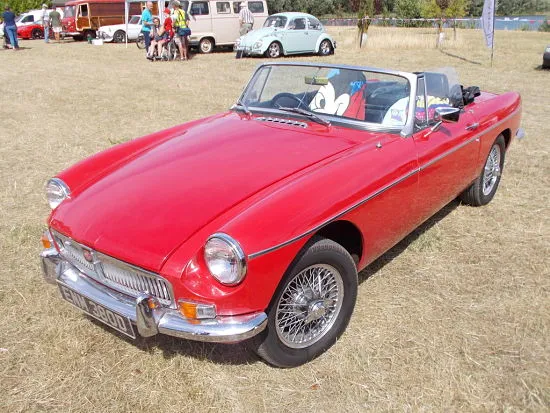
During the war, Cecil Kimber quit MG after a disagreement regarding wartime manufacturing and was tragically killed in a train disaster at Kings Cross station in 1945. Following the war, the first automobile built by MG was the two-seat TC, which would eventually find its way to the North American market. The 1947 YA saloon was swiftly followed by the covers coming off the very popular TD Midget two years later. Morris Motors and the Austin Motor Company amalgamated to become the British Motor Corporation in 1952. During the year of the merger, MGs in production included the YT open-topped four-seater, the YB saloon, and an MK2 version of the 1.2-litre XPAG powered TD Midget.
Despite being a member of the newly established BMC, MG was still known as the MG Car Co. John Thornley, a long-term service manager, was named general manager at this time. Although the 1953 TF was a classic body-on-frame design, the unitary built ZA Magnette was derived on a Wolseley 4/44 and has become the forerunner of a stream of postwar badge-engineered MG saloons.
Following BMC's merger with Jaguar and a subsequent joining with the Leyland Motor Corporation two years later, British Motor Holdings was renamed 'British Leyland Motor Corporation' in 1966, resulting in the MG Car Company brand ultimately being relegated to history. The British Leyland Motor Corporation was nationalised in 1975 and rebranded British Leyland, albeit the MG brand was no longer recognised. Unfortunately for MG, the leadership at BL always appeared biassed towards the Triumph badge, and no new MGs were released throughout the 1970s, with the exception of the MGB V8.
The MG name was reintroduced in 1982 with the debut of the Longbridge built MG Metro, a three-door hatchback that was swiftly followed by the barnstorming 110 mph MG Metro Turbo. The volume manufacturing branch of BL was renamed Rover Group PLC in 1986, and the Rover Group was transferred to British Aerospace shortly after.
The MG Metro was discontinued in 1990, however, the manufacture of the MG Maestro and Montego continued until the following year. The Rover V8 equipped MGB RV8 was introduced in 1992 as a tribute to MG's golden days. British Aerospace sold the Rover Group to BMW two years later. This proved to be a lifeline for MG, as German funding flow aided in the finalisation of the 1995-introduced 1.8-litre K-Series powered MGF, and the new mid-engine sports car went on to be a great success for the newly German-owned company. In 2000, BMW transferred the Rover Group's automobile and engine production resources to the Phoenix Consortium, renaming the resurrected business MG Rover.
In 2004, MG released the 320bhp SV, a two-door coupe based on the Italian-built De Tomaso Bigua, which eventually evolved into the Qvale Mangusta before becoming the British-assembled and MG Sports & Racing-developed MG SV. However, MG's masters were quickly running out of money, and despite lengthy discussions between cash-strapped MG Rover and a number of possible owners, MG and Rover automobile manufacture at Longbridge ceased on April 7, 2005. The ashes of the insolvent MG Rover were finally purchased by the Chinese Nanjing Automotive Company and renamed NAC MG UK Ltd.
